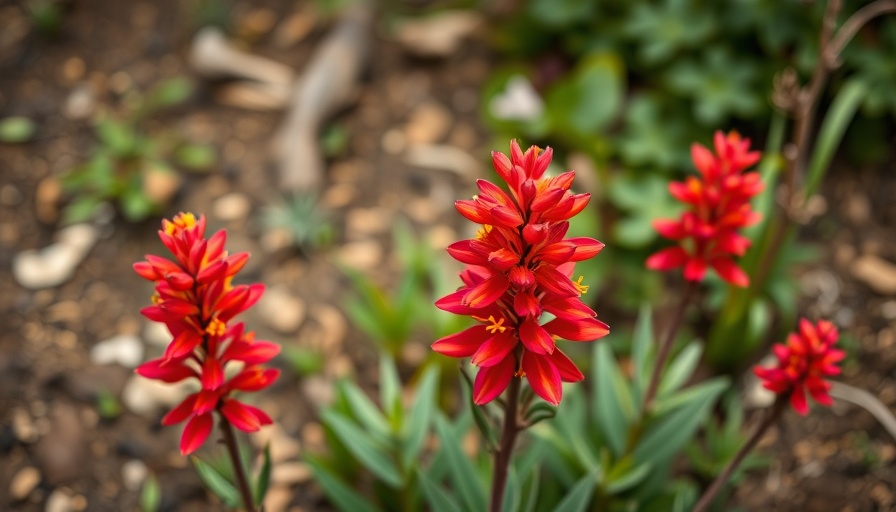
The Vibrance of Indian Paintbrush Flowers: A Gardener's Delight
If you're a gardening enthusiast looking for a stunning addition to your landscape, the Indian paintbrush (Castilleja spp.) is the bright touch you've been searching for. Renowned for its vivid crimson blooms, this semi-parasitic wildflower is not only a feast for the eyes but also a boon for pollinators, making it a significant choice for any native plant garden.
Understanding Indian Paintbrush: More Than Just a Flower
Indian paintbrush is part of a diverse genus with over 200 species, each adapted to various habitats across North America. While some species feature striking red blossoms, others display hues of yellow, pink, purple, and white. The beauty of these flowers lies in their colorful bracts, which surround relatively inconspicuous blooms. Despite their appeal, growing Indian paintbrush can be challenging due to its hemiparasitic nature—it thrives best when it can draw nutrients from a host plant.
Species Selection for Your Garden
Choosing the right Indian paintbrush species is crucial for success in your garden. Different species have specific growing requirements, including soil type, moisture levels, and sunlight exposure. When selecting a variety, consider your local USDA Hardiness Zone: some species are designed for arid deserts, while others flourish in wet meadows. Collaborating with local horticulturalists can provide valuable insights into the best species for your region.
Planting & Care Treasures: Essential Gardening Tips
To ensure your Indian paintbrush plants thrive, you should consider these essential gardening tips:
- Soil Preparation: These wildflowers prefer well-draining, sandy soils rich in organic matter. Testing your soil pH is recommended; a slightly acidic to neutral pH (5.0 to 8.0) is ideal.
- Companion Planting: Utilize the hemiparasitic nature of the Indian paintbrush by planting it alongside host plants such as native grasses. This will enable optimal growth while ensuring that your garden maintains a natural ecosystem.
- Water Management: Once established, Indian paintbrush requires minimal watering. Over-watering can lead to root rot, so ensure that they are in an area where water drains efficiently.
Embracing Biodiversity: Benefits for Pollinators
In today’s gardening era, it's crucial to create environments that cater to local wildlife, especially pollinators. Indian paintbrush flowers produce abundant nectar, enticing bees, butterflies, and other beneficial insects, fostering a thriving pollinator community in your garden. By planting these flowers, you're not just adding beauty; you're participating in the crucial sustainability of local ecosystems.
Common Challenges: Addressing Pests and Diseases
Like any plant, Indian paintbrush is not entirely immune to challenges. Gardeners may encounter pests such as aphids or powdery mildew. Regular inspection and organic pest control strategies can keep your plants healthy. Additionally, understanding your plants' vulnerability to specific pests based on the local climate can help in preemptive care.
Cultivating Your Garden with Indian Paintbrush
Integrating Indian paintbrush flowers into your garden design opens up possibilities for stunning visual displays alongside a vivid palette of native plants. Consider incorporating these wildflowers into borders or using them as striking focal points in your design framework.
Conclusion: A Floral Journey Worth Taking
Incorporating Indian paintbrush flowers into your gardening projects not only enhances the visual landscape of your home but also supports environmental health. By choosing the right species and providing the necessary care, you can create a stunning floral display that encourages pollinators and celebrates the beauty of native plants. With these gardening tips, you’re well on your way to enjoying the vibrant presence of Indian paintbrush in your own backyard!
 Add Row
Add Row  Add
Add 




Write A Comment